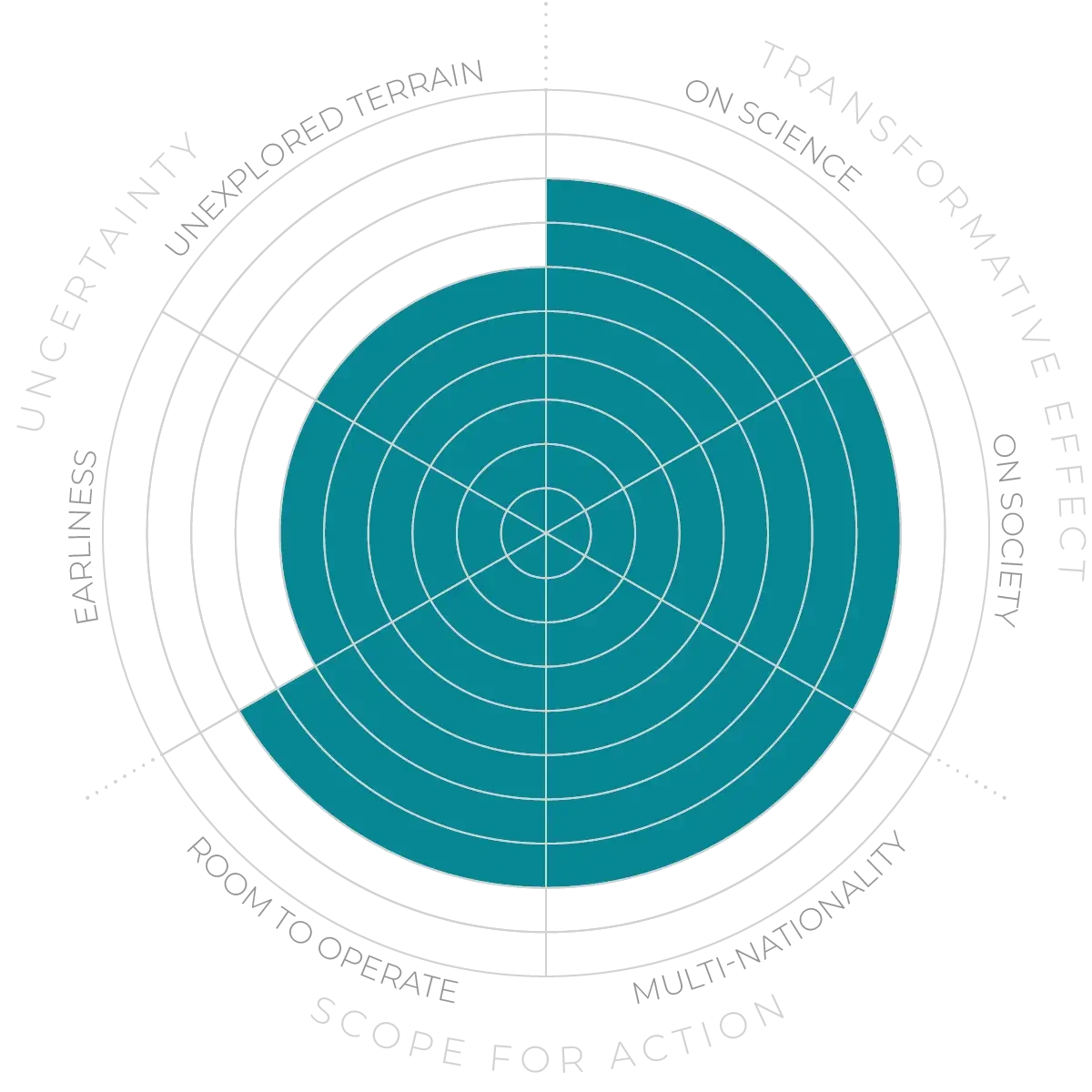Future Horizons:
10-yearhorizon
The ability to regulate certain brain states becomes possible
25-yearhorizon
Brain-control systems revolutionise therapies for some disorders
Progress in decrypting neural states will provide opportunities to regulate brain states using brain-computer interfaces (BCIs). The use of AI in the development of BCIs has potential for revolutionising treatments for neuropsychiatric disorders and for the possibility of enhancing human cognition.16 Disentangling the neural signals relevant to a specific condition, like depression, from the myriad of other brain activities remains a challenge. The vision is to develop sophisticated closed-loop systems that would continuously record brain activity while AI algorithms decode internal states such as mood and then guide personalised therapies in real time. These interventions could range from deep brain stimulation to pharmacology.
A more futuristic and complex vision involves a true fusion of the brain and computer, creating a single, enhanced mind. However, a fundamental obstacle is the unique variability of individual brains, which can be modelled only on a neuron-by-neuron scale. The scale of this challenge suggests that this kind of model of the brain will remain out of reach for the foreseeable future.
Decrypting the brain - Anticipation Scores
The Anticipation Potential of a research field is determined by the capacity for impactful action in the present, considering possible future transformative breakthroughs in a field over a 25-year outlook. A field with a high Anticipation Potential, therefore, combines the potential range of future transformative possibilities engendered by a research area with a wide field of opportunities for action in the present. We asked researchers in the field to anticipate:
- The uncertainty related to future science breakthroughs in the field
- The transformative effect anticipated breakthroughs may have on research and society
- The scope for action in the present in relation to anticipated breakthroughs.
This chart represents a summary of their responses to each of these elements, which when combined, provide the Anticipation Potential for the topic. See methodology for more information.



